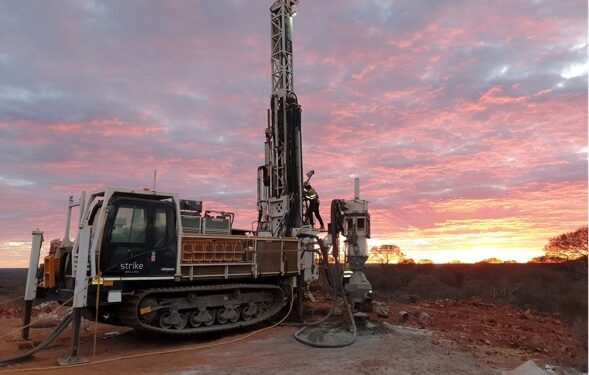St George Mining Limited (ASX: SGQ) has intersected a very wide interval of pegmatite in the first drill hole to test the ‘Manta’ seismic reflector at the company’s Mt Alexander Project.
Further drilling is planned to test this large target at shallower depth, initially where the pegmatite is interpreted to intersect, or underly, the outcropping greenstone sequence. The granite/greenstone interface is considered more prospective for pegmatite hosted mineralization compared with the granite intrusion which may be the source of the pegmatite.
“This is an exciting development in our lithium exploration at Mt Alexander,” Executive Chairman, John Prineas, said.
“The early results from MAD213 are very encouraging with a large intersection of pegmatite that may be associated with significant structural activity.
“We are looking forward to further drill testing this very large pegmatite unit.”
Seismic identifies thick pegmatite:
The Manta seismic reflector was first announced in September 2022. The reflector was modelled with a strike of approximately 1,000m and varying thickness.
Given the size and contrast of the seismic reflector against the surrounding granite host rock, initial interpretation suggested it could be a structurally emplaced portion of the greenstone belt to the south and therefore a viable target for nickel sulphides, similar to the high-grade Ni-Cu-PGE mineralisation intersected at the Cathedrals Belt, ~three km north of Manta.
Drilling of MAD213 and subsequent geophysical testing of the core has shown the prominent reflector is probably associated with an interval containing numerous pegmatites below the granite, including one interval of 120.8m thickness. The pegmatites are being sampled for laboratory assay.
The exceptional thickness of the main pegmatite intersected in MAD213, the interpreted flat geometry of the associated seismic reflector, and the potential for the pegmatite intrusions to intersect or underly the adjacent greenstone sequence at shallower depth, support a compelling case for further drill testing.
Mineralised pegmatites at Mt Alexander:
Numerous steep dipping, cross cutting pegmatites have been identified in the outcrop along a 15km corridor at the Mt Alexander greenstone belt. These pegmatites include the lithium mineralised pegmatites at the Jailbreak Lithium Prospect, nine km south of Manta. Reverse circulation (RC) drilling is in progress at Jailbreak.
The current RC drilling programme which includes work at Jailbreak, is designed to test a wide area of the pegmatite corridor on St George’s tenure.
This corridor is adjacent to the Copperfield Granite, interpreted to be one source of the mineralised pegmatites at Mt Alexander and at Red Dirt Metals’ Mt Ida Lithium Project. Mt Ida is situated approximately 15km south of Jailbreak.
Based on the seismic data and drill core from hole MAD213, the Manta pegmatites differ from the cross-cutting pegmatites seen at surface within the Mt Alexander pegmatite corridor.
The Manta pegmatites appears to have been intruded into a relatively flat, extensional structure that may extend below the granite and into, or below the adjacent greenstone sequence. This could provide a more favourable setting for the potential accumulation of mineralization.
Although modelled as a circular feature, the current interpretation of the seismic reflector is constrained by the survey parameters. The actual pegmatites may be more extensive.
Further diamond drilling at Manta is planned to test the pegmatites – initially to the south of MAD213 – in the area of the interpreted granite/greenstone contact where the seismic reflector is modelled to continue towards surface.
A diamond rig is expected at site during April to commence this scope of work.
For further information please visit: https://stgm.com.au/












